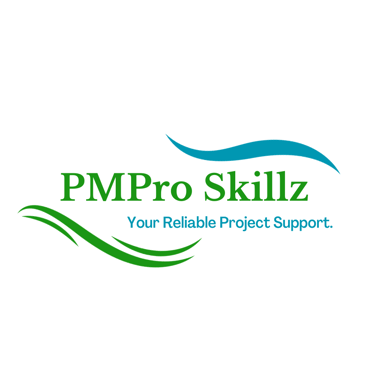Project Me: Overcoming Obstacles and Adapting to Change
Navigate the twists and turns of Project Me with resilience. Discover strategies to overcome obstacles, adapt to change, and embrace a growth mindset on your path to personal transformation.
PROJECT ME
Iyanna Trimmingham
9/7/20236 min read


Growth is rarely linear—expect twists, turns, and setbacks as part of Project Me. Adopt flexibility as you adjust your roadmap to navigate inevitable changes in yourself and life circumstances. Your goal may remain constant, but the path to achieving it will meander. When obstacles arise, avoid viewing them as failures or adverse events to be avoided. Rather, adopt a growth mindset that frames challenges as feedback and learning opportunities. Setbacks indicate areas requiring further self-examination and development. Let your stumbling blocks become stepping stones towards greater wisdom and self-awareness.
Leverage structured project management problem-solving techniques such as root cause analysis and creative mitigation strategies. Diagnose why specific setbacks have occurred and respond appropriately. Manage your mental and emotional reaction to change with non-reactivity. Make decisions from a place of non-judgment and fearlessness. Periodically check whether aspects of Project Me's original vision or plan need refinement given your evolution as a person. Remain open to change while staying true to your core values and purpose.
Adapt goals and tactics while maintaining overall alignment with your authentic self. Embrace the messiness and unpredictability of growth. The only constant is your commitment to continued expansion. With inner resolve and a willingness to pivot, you will traverse unfamiliar terrain and discover new capacities within yourself. Your stamina and character are strengthened with each rise from temporary defeat.
Adopting a Growth Mindset
Challenges and setbacks are inevitable on the path of personal growth. How you interpret these obstacles will determine what you gain from them. Cultivate a growth mindset that frames difficulties as opportunities for learning and self-discovery rather than adverse events to be avoided. View challenges as feedback—obstacles provide important data signaling where you need to build skills and adjust course. Each difficulty strengthens you.
Focus on the root cause—look beyond surface symptoms to deeply diagnose why you have reached an impasse. Increase your self-awareness. Leverage creative brainstorming—generate many options to work around obstacles. Suspend judgment during ideation. Apply analysis afterward.
Maintain optimism—stay encouraged through challenges, knowing they develop inner resources that enable future success. This too shall pass.
Value the process—keep focusing on daily progress rather than attaching identity heavily to outcomes. What matters most is your willingness to learn and grow.
Celebrate small wins—acknowledge each inch forward during difficult periods. Momentum builds gradually.
Trust your resilience—draw strength from having navigated adversity before. Each challenge that did not break you made you wiser and stronger. This one will too.
Progress requires a growth mindset that remains open and stretched during difficult periods. Setbacks are inevitable. Benefit comes from how you respond. Lean into the learning.
Diagnosing Causes of Obstacles


When facing setbacks, avoid getting trapped in frustration. Harness project management tools to systematically diagnose root causes so you can respond effectively. Useful diagnostics include:
After-action reviews—objectively analyze successes and failures upon completing key milestones. Identify lessons learned to improve next time.
Five whys—ask “why” five times to unpack multiple layers of causation behind a problem. Move from surface issues to the true root.
Fishbone diagrams—visually map out potential variables contributing to an obstacle. Include categories like skills, resources, methods, and environment.
SWOT analysis—examine strengths, weaknesses, opportunities, and threats related to the difficulty. Develop strategies accordingly.
Surveys—gather input from key stakeholders and team members to shed light on all perspectives. Look for patterns.
Metrics analysis—study data for trends and outliers that reveal developmental areas. Let evidence guide next steps.
Avoid guessing at causes or making assumptions. Employ rigorous diagnostics to gain an accurate, nuanced understanding of why you are stuck. The more precisely you identify the root issues, the better you can address them. Convert obstacles into progress through humble inquiry.
Creatively Generating Solutions
Once you have insight into the core factors preventing progress, ideate creative solutions. Brainstorming invites non-obvious possibilities and fresh perspectives. Enlist lateral thinking techniques like:
Assumption reversal—challenge implicit constraints around the problem. Reject limiting beliefs about what’s possible.
Random stimuli—introduce unrelated elements to spark new connections. Shake up thought patterns.
Role play—imagine how different personas would approach the situation. Play against type to expand options.
Exaggeration—radically amplify or minimize aspects of the issue. Highlight overlooked nuances.
Analogy—compare to unrelated domains for metaphorical insights. Make the familiar strange.
Perspective shifts—view the challenge from different physical, temporal, or conceptual vantage points. Get distance.
Reframing—rephrase the problem more constructively. Shift negative language to reveal solutions.
Prototype rapidly—quickly build rough versions of ideas to impart learning. Stay nimble.
The wider the range of alternatives generated, the more likely you are to identify promising pathways forward. Build on others’ suggestions. All ideas have value. Select the most viable options to implement systematically. If those fail, return to ideation again. Persist flexibly until you forge ahead.
Adapting Plans to Expand Capacity


While pushing beyond obstacles, periodically reassess if aspects of your original plan need to adapt given personal changes over time. Adjust course while retaining alignment with your core purpose and values. Ways to refine your path include:
Revisit your vision—Does it still fully resonate, or does it need updating based on your evolution and life stage? Reflect deeply.
Review goals and metrics—Are these still the optimal ones, or should different priorities take center stage? Ensure relevance.
Improve systems and processes—Analyze your workflows for greater efficiency, impact, and fulfillment. Simplify and empower.
Learn new skills—Identify capacities required to achieve revised goals. Seek training and mentoring. Master what’s missing.
Reallocate resources—Repurpose assets toward areas of greater priority and possibility. Prune and fertilize strategically.
Change environments—Refresh your physical, social, and mental contexts to inspire creativity. Dislodge assumed constraints.
Manage energy—Adjust activities based on your evolving energy levels, strengths, and needs across body, emotions, mind, and spirit. Sync with your natural rhythms.
Delegate responsibilities—Offload tasks not aligned with your zone of genius to focus on what only you can do. Remove unnecessary burdens.
While plans must adapt, stay anchored in your core values and integrity. You are simply expanding your repertoire of strategies and skills while remaining true to your essence. Adjust with purpose and alignment.
Maintaining Perspective Through Change
As Project Me brings both victories and setbacks, retain perspective through all the ups and downs along your journey. Keep navigating toward your North Star. Ways to maintain perspective include:
Separate events from identity—Don't define yourself by temporary successes or failures. You are not your results.
Focus on daily progress—Dwell on whether you took a step forward today, not long-term outcomes outside your control. Keep showing up.
Remember "this too shall pass"—Ups and downs come in phases in life and Project Me. The wheel keeps turning. Ride each wave gracefully.
Practice non-reactivity—Refrain from overreacting to highs and lows. Cultivate resilience and nonattachment through steady spiritual practices.
Trust your capacities—When you feel discouraged, recall times you overcame major challenges through courage and creativity. This time is no different.
Maintain support systems—In difficult periods, deepen engagement with mentors, peers, and communities who uplift and strengthen you.
Review your vision—Revisit your original intention and aspirations when lost in the weeds. Recall the heart behind Project Me.
Have compassion—Be gentle with yourself when plans go awry. Growth is nonlinear. You are progressing beautifully.
Your vision and pure motivation remain steady guides regardless of external conditions. Come back to your center again and again. Be a sage who skillfully navigates all seasons of change.


Key Takeaways:
Adopt a growth mindset that frames obstacles as feedback for learning and self-development.
Leverage diagnostics to pinpoint the root causes of difficulties rather than making assumptions.
Brainstorm creative solutions and be willing to prototype multiple options if needed.
Refine your plans over time to align with your evolving capacities while staying true to your core essence.
Maintain perspective through ups and downs. Focus on daily progress rather than attachment to outcomes.
Draw strength from having overcome challenges before. Persist flexibly through setbacks.
Stay committed to your growth and expansion above all else. The path will meander but your purpose remains clear.
With inner resolve and adaptability, you will navigate the inevitable messiness of growth to emerge wiser and stronger. Temporary defeats prepare you for greater victories. Keep maturing in self-awareness and capacity. The only constant is your forward movement, however gradual. Trust the process completely.

